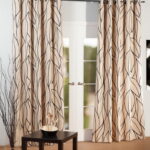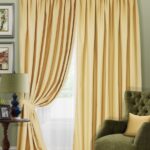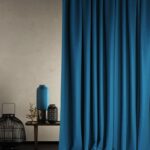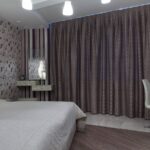Description and characteristics of blackout curtains
Taming the annoying morning rays or the glitter of the city at night is not an easy task. Especially when you need to find the perfect solution for your interior. What is the difference between different types of dense fabrics? How to choose the right curtains that do not let in light? All about dark curtains - in this article.

What are blackout curtains
Dense fabric curtains are capable of partially or completely blocking the access of light. They perform various functions:
- protection from morning sunlight if the bedroom window is located on the east side;
- blocking sunlight for those who work the night shift and rest during the day;
- partial blackout in the nursery, necessary for the baby's daytime sleep;
- elimination of night city lights, advertising glare, signboards and traffic lights;
- salvation from a day lasting six months in northern latitudes;
- blackout for presentation and video in home theater;
- insulation, protection from drafts and noise.
Thick fabrics not only protect from light and obstruct visibility from the street, but also decorate the room, give it a unique charm. Blackout curtains can create coziness, softness of the interior, emphasize the chosen style or become a daring accent.
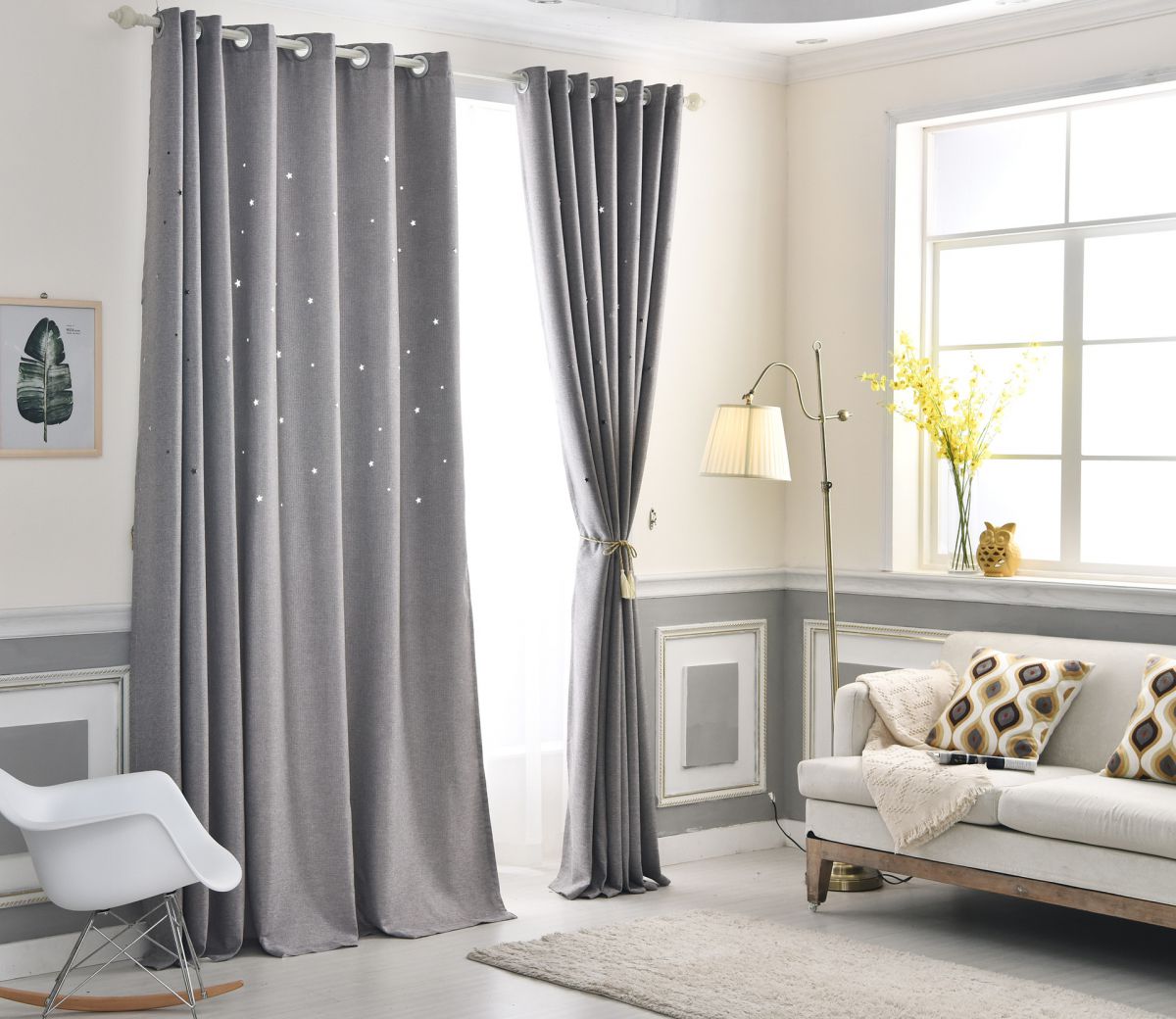
What are they
Light-protective fabrics are divided into 2 types, depending on the light transmission. What are the names of the curtains that do not let in light? Blackout blocks the light completely, 100%. Dimaut delays light penetration in part, by 80-99%.

In practice, the term blackout is used for both options. Absolute shading is not always necessary. If you go to work in the morning, it is advisable to recognize that morning has come. And in the nursery, you should leave a little light so that you can see the crib with the baby.
Attention! Blackout curtains are made of three layers. The first from the side of the window is reflective, white. In the middle there is a dense fabric that traps the light flux, then an inner layer that performs a decorative function.
Having understood the desired effect, you can start choosing materials. High to medium density fabrics completely block light. They are sewn using various materials:
- Velvet. Soft, dense fabric with short pile on the front. Able to protect from sunlight and drafts;
- Thick silk. Does not wrinkle, forms voluminous folds;
- Velveteen. Easy to drape, does not wrinkle;
- Wool. Has a soundproofing effect;
- Tapestry. Thick, heavy fabric, suitable for curtains or woven blinds;
- Blackout is an impervious synthetic fabric treated with several layers of acrylic foam. It is based on polyester fibers. Used alone or in combination with other fabrics.

In addition, damascus, linen, taffeta, satin, brocade, moire are used in the interior. Each of the fabrics gives a special touch to the interior.
How to choose the right one
The main criterion for the selection of light-shielding curtains is how much they should block light from the street.

Additional Information! The concept of blackout originated in Finland. For a quarter of a year, the inhabitants of the country live in conditions of white nights, so the Finns have created a light-protective type of curtains. Later, the production of curtains was taken up in Holland and Belgium.
When choosing a curtain, you should pay attention to the resistance to fading. Synthetic fabrics last longer than natural fabrics.
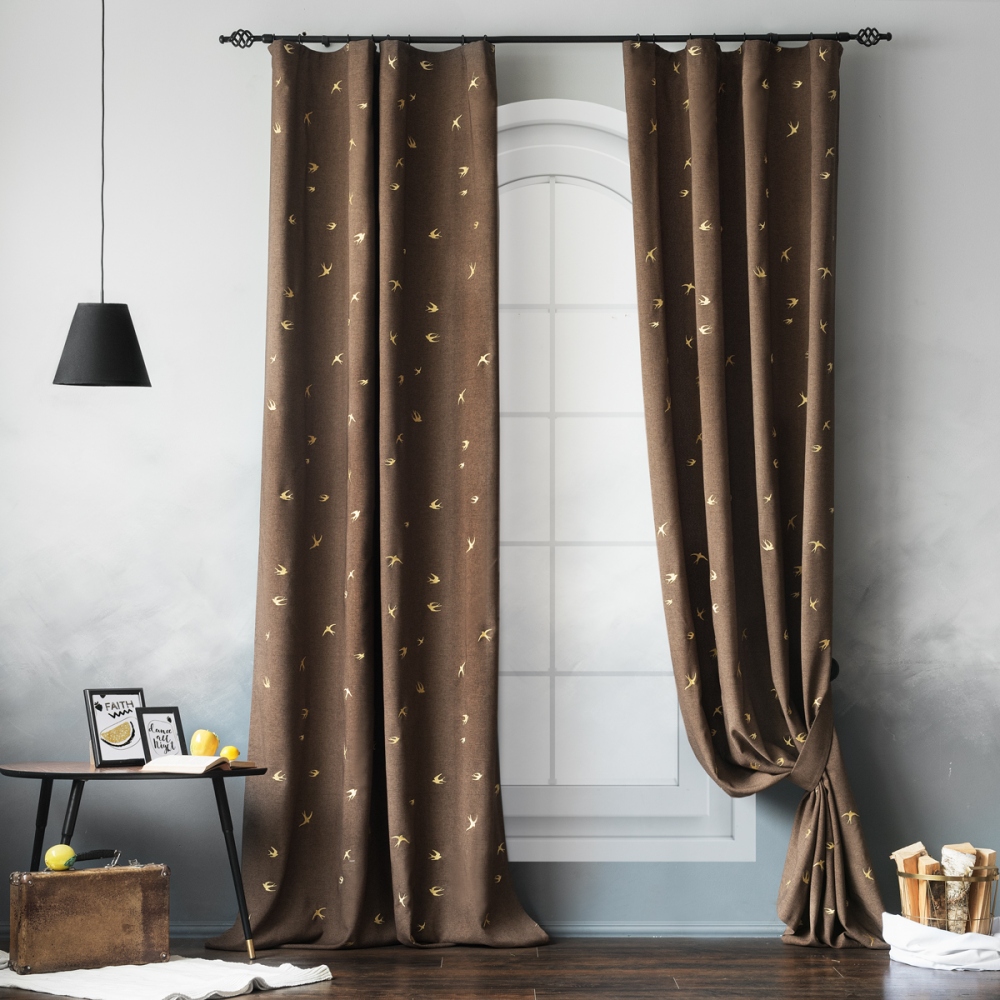
Maximum fabric density required:
- home theater;
- in case of sleep problems, for the rapid production of melatonin, the sleep hormone;
- when housing is located in northern latitudes;
- if the owner of the bedroom works the night shift.
In other cases, blackout curtains successfully cope, with which it is easy to organize blackout depending on the situation.

If you need high opacity, it is worth choosing a fabric or blackout model. Light absorbing options are sufficient for a darkening effect.
Important! To select curtains for a nursery, you should pay attention to hypoallergenic fabrics.
The next criterion is the ability to keep in shape. Anti-crease curtains are more practical. An important criterion is ease of care. The material should be easy to wash, dry and iron without losing its shape.
How to fix the curtains
The darkening matter will fully fulfill its function if properly hung.
Key recommendations:
- If you use a ceiling cornice, the curtain will fit snugly against the ceiling and block the access of light. In the case of other types of mounts, they should be positioned as high as possible.
- In width, the cornice should overlap the window and go on the wall by 10-20 cm. Sometimes designers suggest completely covering the wall with one or two or three windows with curtains. This makes the room more comfortable.
- The outer edge of the material should touch the wall. To achieve this, you need to tuck and secure the fabric from the inside.
- The bottom edge of the curtains touches the floor or does not reach it slightly. Light will not penetrate from below.

The types of fasteners depend on the type of design chosen: roller blinds, Roman, Chinese, Austrian or classic.
Application in the interior
The choice of window decoration style depends on the characteristics of the room, its purpose and the style of the interior. You can choose a unique solution for each room. Correctly sewn curtains hide the flaws of the window, change the geometry of the room.
In the case of a wide window, solutions with a flat canvas, without folds, are suitable. If you need to stretch the window vertically, the option with a long curtain will do. A tall window in a narrow room can be expanded by choosing a colored fabric. A lambrequin with a frill around the edge, or a contrasting texture / color transition will help to visually shorten the window. Small windows will hide the cornice in the entire wall.

Important! In the nursery, it is undesirable to use classic curtains that fall to the floor. More practical are Roman shades. In the nursery, bright colors and cartoon plots are often used. For example, a set of blackout curtains with an underwater theme - the underwater world.
A kitchen or dining room located on the south or east side needs light isolation, especially in the summer heat. In the kitchen, roll options are relevant.

The bedroom and living room are ideal for classic curtains. They create a darkening and the effect of privacy, comfort, peace.

How to properly care
Light protection curtains require periodic washing. The care intensity depends on the material. If you have silk, velvet curtains or blackout material, it is better to follow the advice of experts:
- Choose a delicate mode with a temperature of no more than 40 degrees.
- Do not use too many turns when drying. A value of 400-500 is desirable.
- Dry naturally, flattened.
- Iron with warm, not hot iron.
- Japanese, roller blinds and pleated blinds do not need washing. It is enough to wipe them with a damp cloth or vacuum them.

Blackout curtains for windows are practical and attractive for their decorative functions. A wide range of colors, textures and models allows you to choose the best option for any room. Light-shielding qualities make curtains indispensable in everyday life.

Video: blackout curtains in a modern interior

